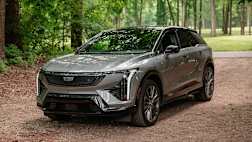‘Bidirectional charging’ may sound like the kind of thing an electrician will talk to you about in between waffling on about amperes and fuses while you dutifully nod intelligently, like you understand. But the truth is it’s A) actually really quite interesting, and B) something you really should know about if you have even a passing interest in electric vehicles (EVs), or even if you just like using electricity.
Indeed, it could just become something so big that it changes the way we live, and our power bills, forever.
As you can probably guess from the prefix, bi-directional allows a two-way flow of electricity into and out of an EV, a clever process that can result in not only saving money on your energy bills, but also give you the potential to make money by selling excess energy back to the grid.
Before we get into all of that though, it’s best we look at how a two-way charging EV works, as well as a few different types of bidirectional charging.
How it works
EVs take Alternating Current (AC) electricity from the grid and convert it to Direct Current (DC) electricity, the type of juice the EV needs to run on. That process happens either via an AC-to-DC converter inside the car, or an AC-to-DC converter in the charger that the EV is using.
If you want to engage in bidirectional charging by sending electricity back into the grid or into your home - more on that in a sec - you’ll need a bidirectional charger that contains an internal converter that can change the DC electricity back to AC.
Vehicle-to-Grid (V2G)
.jpeg)
EVs are, essentially, big batteries on wheels. Cars in general spend around 95 per cent of their time parked and not in use. So why not take advantage of the situation by utilising an EV’s ability to store and send excess energy back to the grid via bidirectional charging? V2G does exactly that, allowing an EV to charge in off-peak periods, then send electricity back to the grid during peak in-demand periods when the grid needs an extra helping hand. EV drivers in the UK are already selling this excess energy back to the grid, and potentially anyone with a bidirectional EV and charger will have the ability to make money out of their cars.
Vehicle-to-Home (V2H)

This is exactly what it sounds like: the awesome ability to send energy from your EV to your home (or another type of building, there’s no need to discriminate), powering it up for potentially days at a time. As with V2G, V2H can assist in stabilising both the local and national power grid, reducing the pressure put on the grid as a whole.
If renewable power like wind or solar is used to power the EV, there’s the potential to power both the car and house for free. Charge up your car during the day when it’s sunny, then use that power for the next few nights or cloud days.
And since wind and solar power are variable depending on how much sun or wind you’re getting, an EV using bidirectional charging can be utilised to balance everything out depending on the energy demands at any given moment.
Vehicle-to-Load (V2L)
.jpeg)
We’ve talked about powering the grid and your home, but what about smaller devices, like, say, a light, or a fridge, or a laptop? That’s where V2L comes in, with the ability to use energy stored in the EV to deliver AC power to appliances, anywhere you happen to be parked (hello microwaved meals while camping). Rather than using a bidirectional charger, V2L tech in an EV contains an integrated inverter to provide AC power via a 240V outlet. A car with V2L capability can also power up another EV.
Cars with bidirectional charging

Although there are not a lot of bidirectional charging cars on the market in Australia just yet, V2G is expected to be standard on all new EVs by 2025.
In Australia, Nissan Leaf bidirectional charging is available. It offers V2G, as does Mitsubishi’s range of plug-in hybrid electric vehicles.
Model 3 bidirectional charging would be a welcome addition to the world’s top-selling EV, but sadly Tesla bidirectional charging looks like a no-go for the time being, although that can change with the snap of Elon Musk’s fingers. (It’s worth noting that people will buy a lot fewer Tesla wall batteries if they have bidirectional charging.)
Volkswagen will bring V2G capability to the market when its line of ID EVs launch in Australia, which is expected to be in 2023.
The Hyundai Ioniq 5 offers V2L, as does the Kia EV6.
The electric Ford F-150 Lightning has launched in the US, offering bidirectional charging vis its CCS port (not CCS charger, as some mistakenly call it).
The electric Genesis GV60 SUV, GV70 mid-size SUV and G80 sedan will all be available in Australia soon, each coming with an option for V2L capability.
Pilot bidirectional electric car charging in Australia
.jpeg)
In 2020, Nissan launched a pilot called the Realising Electric Vehicle Services (REVS), a major government trial of V2G tech in Australia prior to the launch of Nissan Leafs with V2G capability.
Several Australian universities have also led studies about implementing V2G tech in Australia and how users can sell energy back to the grid.
In terms of bidirectional chargers that can be installed at home, JET Charge is bringing the world’s first bidirectional DC charger to Australian in the form of the Wallbox Quasar, which is expected to sell for somewhere around $10,000, although that cost will fall dramatically as they become more common (think Plasma TVs).
Ingenious Australian company Rectifier Technologies has also developed the Highbury DC Bidirectional Charger, which it is touting as “the world’s slimmest bidirectional DC charger”.








.jpg)
.jpg)
.jpg)


.jpg)

.jpeg)




.jpg)